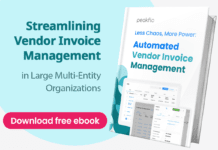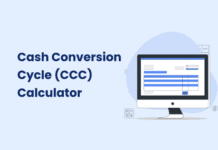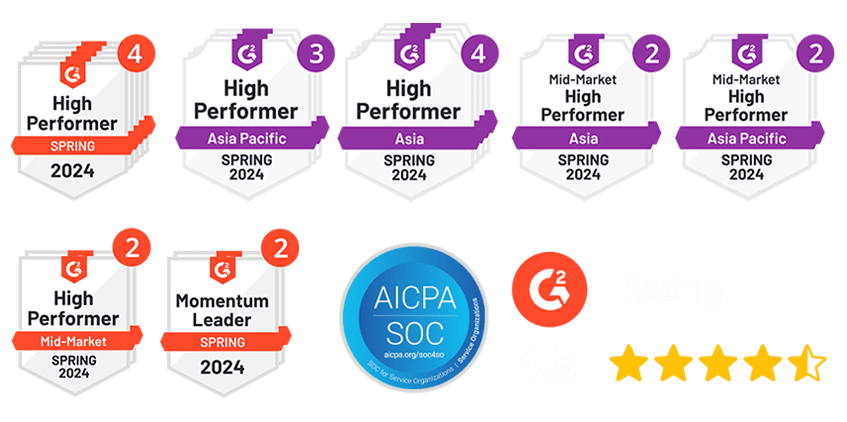Late payments, billing mistakes, and rising costs hurt transportation companies. A single unpaid invoice can delay fuel purchases, payroll, and repairs. Large enterprises handle thousands of shipments monthly. If payments slow down, business operations take a hit.
Transportation accounts receivable (AR) is more than just sending invoices. Late payments shrink profits, limit growth, and increase overhead. Many enterprises now automate AR to get paid faster, reduce risks, and lower costs.
In this guide, we will explore the challenges of in-house AR management, the benefits of automation, and how it can help streamline your receivables while cutting costs.
Understanding Accounts Receivable in Transportation
Every transportation company delivers goods before getting paid. The money owed by customers is called accounts receivable. Managing it well is key to keeping cash flow steady and covering expenses like fuel, payroll, and maintenance.
In the transportation industry, payments often take weeks or months to arrive. Delays happen due to invoice errors, slow processing, or disputes. Large enterprises dealing with thousands of shipments face even greater challenges. A few late payments can create major cash shortages.
For example, a trucking company completes a delivery for a retailer. The invoice says “Net 30,” meaning payment is due in 30 days. However, if the retailer delays payment by another 30 days, the trucking company must wait two months to get paid. Meanwhile, expenses keep piling up.
Transportation accounts receivable management helps businesses track, collect, and process payments faster. The goal is to reduce delays, improve cash flow, and avoid financial strain.
Benefits of Effective Accounts Receivable Management
Good transportation accounts receivable management helps businesses stay financially strong. It ensures vendors get paid on time, reducing cash shortages. A clear system makes payments faster and easier to track. Here is how effective AR management helps:
1. Stronger Cash Flow Keeps Operations Running
Payments must arrive on time for vendors to cover daily expenses. Fuel, driver wages, and vehicle maintenance all depend on steady cash flow. Companies can invest in new equipment and grow when payments come in as expected.
2. Fewer Late Payments Reduce Risk
A structured AR process helps vendors send timely invoices and follow up properly. Clear payment terms and reminders encourage customers to pay faster. This reduces financial strain and prevents cash shortages.
3.Lower Administrative Costs
Handling AR requires time and effort. A well-managed system reduces paperwork and manual tracking. Automation speeds up invoicing, allowing teams to focus on other business needs. This cuts labor costs and improves efficiency.
4.Fewer Billing Disputes
Invoice errors can delay payments. A strong AR process ensures accurate billing, reducing customer complaints. When charges are correct, payments arrive faster, and relationships stay strong.
5. Better Credit Control
Tracking unpaid invoices helps vendors spot slow-paying customers. If a customer delays payments often, vendors can adjust credit terms. This reduces financial risk and prevents large unpaid balances.
6. Faster Dispute Resolution
Payment disputes happen in the transportation industry. A structured AR system helps resolve issues quickly. When businesses respond fast, payments do not stay stuck for long.
7. Easier Financial Planning
Knowing when payments will arrive makes budgeting easier. Vendors can plan for expenses, invest in growth, and avoid financial surprises. Reliable AR management creates a stable business environment.
Common Challenges of Managing AR in Transportation
Managing transportation accounts receivable is more than just sending invoices. Payments take time, and mistakes can cause long delays. Large enterprises handle thousands of shipments each month. A few late payments can create serious cash flow problems. Here are the biggest challenges:
1. Slow Payments Create Cash Flow Problems
Many customers take 30, 60, or even 90 days to pay. Meanwhile, vendors must cover fuel, driver wages, and maintenance. If cash runs low, businesses may need to borrow at high interest rates.
2. Invoice Errors Lead to Payment Delays
Small mistakes can stop payments. A missing rate, incorrect charge, or duplicate fee can cause a dispute. Customers will not pay until the issue is fixed. Large enterprises process thousands of invoices, increasing the chance of errors.
3. Tracking Payments Is Complicated
Each shipment has different billing terms. Some customers pay in 30 days, while others take 90. Without a strong accounts receivable management system, it is hard to track who owes what. Missed follow-ups can lead to serious losses.
4. Customers Dispute Charges Often
Freight rates, extra fees, and weight adjustments can cause disagreements. Customers may challenge charges, delaying payments even more. Resolving these disputes takes time and adds extra costs.
5. AR Management Is Expensive
Vendors need a team to send invoices, track payments, and handle disputes. Hiring, training, and payroll add to costs. Large enterprises may have to spend millions each year on receivable management of in-house accounts.
6. Unpredictable Payment Terms
Each customer has different payment terms. Some follow “Net 30,” while others stretch payments to 60 or 90 days. Without clear agreements, cash flow becomes unstable.
7. Too Many Manual Processes
Many companies still use spreadsheets and paper invoices. These systems slow down collections and increase errors. Modern automation tools can speed up payments, but they require investment.
Automating Accounts Receivable for Transportation Companies
Managing accounts receivable takes a lot of time. Companies must track payments, handle disputes, and follow up on unpaid invoices. Doing this manually slows things down and increases costs. Automation helps businesses get paid faster, reduce mistakes, and save time.
1. Faster Payments, Better Cash Flow
When invoices go out late, payments come in late. Automation sends invoices as soon as they are ready. It also reminds customers when payments are due. This keeps money flowing and prevents overdue balances.
- Invoices are sent automatically, with no waiting.
- Customers get reminders so they don’t forget to pay.
- Fewer overdue payments mean a healthier business.
2. Lower Costs, Less Work
Hiring and training employees to handle accounts receivable is expensive. Automation reduces the need for extra staff. It also speeds up processes that would normally take hours.
- No need to hire more people just to send invoices.
- Fewer payroll and administrative costs.
- Teams can focus on other tasks instead of chasing payments.
3. Fewer Billing Mistakes, Fewer Disputes
Even small errors in invoices can cause big delays. Automation double-checks invoices before they are sent. This ensures accuracy and prevents common billing mistakes.
- Invoices are reviewed before reaching the customer.
- Clear, correct invoices reduce payment disputes.
- Payments are processed faster without back-and-forth corrections.
4. Better Security and Compliance
Financial transactions must follow strict rules. Keeping up with these regulations can be difficult. Automated systems are built to meet security and compliance requirements. They also protect financial data from fraud.
- Compliance checks happen automatically.
- Data is encrypted for security.
- Reduces the risk of fraud and financial penalties.
5. No More Outdated Tracking Methods
Many companies still use spreadsheets to manage payments. This leads to errors and wasted time. Automated systems track payments in real-time. Businesses can see exactly when and how customers pay.
- AI-powered invoicing removes manual data entry.
- Payments are tracked as they come in.
- Businesses have a clear view of cash flow at all times.
6. Quick and Easy Dispute Resolution
Payment disputes are common in transportation. Customers may question freight charges, extra fees, or delivery issues. Automation helps resolve disputes faster. It flags disputes and routes them to the right person.
- Issues are spotted and handled quickly.
- Digital records help settle disputes fairly.
- Payments don’t get stuck in long, drawn-out processes.
7. More Time to Focus on Growth
When employees don’t have to chase payments, they can focus on more important work. Automation takes care of repetitive tasks so businesses can focus on growth.
- Teams spend less time managing invoices.
- More attention can go to logistics and customer service.
- The business runs smoother with fewer financial headaches.
Best Practices for Automating Accounts Receivable in Transportation
For automation to work well, companies need the right system and process. Here is what you need to maintain.
1. Pick an Automation System Designed for Transportation
Not all accounts receivable software works for freight billing. Transportation companies deal with extra charges, changing rates, and mileage-based pricing. A system built for the industry makes invoicing easier and payments faster.
- Supports freight-specific invoices and payment structures.
- Handles different types of charges, like fuel surcharges and accessorial fees.
- Connects with transportation management systems (TMS) and accounting software.
Using the right system prevents errors and reduces billing disputes.
2. Understand the Costs Before Choosing a System
Some automation platforms have extra fees that add up over time. Businesses should know exactly what they are paying for before signing up. The goal is to save money, not spend more on hidden charges.
- A flat-rate model is better for companies with a high number of invoices.
- Some systems charge extra for automated payment tracking and reports.
- Compare the time and money saved by automation with the cost of the service.
A good system reduces the need for extra staff and lowers administrative costs.
3. Send Invoices Automatically and Track Payments in Real-Time
Waiting too long to send invoices leads to late payments. Automation sends invoices as soon as deliveries are complete. Customers also get reminders so they don’t forget to pay.
- Invoices go out instantly without manual work.
- Payment tracking shows when money is coming in.
- Automated reminders help customers stay on schedule.
This keeps cash flow steady and prevents overdue payments.
4. Set Payment Terms and Automate Follow-Ups
Unclear payment rules create confusion and delays. Automation enforces clear payment terms from the start. Customers know exactly when payments are due and what happens if they’re late.
- Late fees are applied automatically if payments are overdue.
- Customers get scheduled reminders before due dates.
- The system flags late accounts so the team can take action.
This helps businesses stay on top of payments without constant manual follow-ups.
5. Use Automated Reports to Monitor Performance
Automation doesn’t mean businesses should stop tracking their accounts. Real-time reports show exactly what’s happening with payments. Instead of making reports by hand, businesses get instant updates.
- Dashboards show which invoices are paid and which are late.
- Reports track disputes, delays, and collections.
- Alerts notify teams about potential payment issues before they grow.
This helps businesses fix problems early and keep everything running smoothly.
6. Keep Payment Data Safe and Follow Regulations
Handling payments comes with risks. A good automation system protects sensitive financial data and follows industry rules. Security features keep customer information safe and prevent fraud.
- Encryption protects payment data from hackers.
- Compliance checks make sure all transactions follow regulations.
- Audit trails provide a clear record of all payments and invoices.
This prevents data breaches, fraud, and financial penalties.
7. Stay Involved and Keep Communication Open
Even with automation, companies still need to stay in control. Regular check-ins make sure everything is running smoothly. Automation should improve efficiency, not remove oversight.
- Weekly or monthly performance reports keep teams updated.
- Alerts notify managers about late payments or disputes.
- A customer portal lets clients track invoices and payments themselves.
This helps businesses quickly resolve issues and maintain strong customer relationships.
Why Peakflo is the Best Solution for Transportation Accounts Receivable Management?
Managing transportation accounts receivable can be a big challenge. Late payments, invoice disputes, and long follow-up processes slow down cash flow. Peakflo solves these problems by offering automated AR solutions that help businesses get paid faster and reduce manual work. Here is how Peakflo can help:
1. Simplify Invoice Validation
Validating proforma invoices can be slow and confusing. With Peakflo, you can:
- Create professional proforma invoices that clients can review easily.
- Let clients raise disputes for any line item directly on the invoice.
- Track disputes and respond quickly using Peakflo’s simple system.
- Allow clients to approve invoices with a single click.
This makes proforma invoice validation faster and more accurate, leading to quicker payments.
2. Streamline Invoicing
Traditional invoicing takes time. With Peakflo, your team can:
- Create and send digital invoices in seconds.
- Generate GST-compliant invoices easily.
- Set approval policies for invoices and credit notes.
- E-sign invoices for quick approval.
These tools help your team send professional invoices without delays, cutting down on errors.
3. Boost Your Collections Team’s Productivity
Peakflo works like a CRM for your collections team. With Peakflo, your team can:
- Track AR tasks in one place and never miss a follow-up.
- Use automated reminders to stay on top of collections.
- Collaborate easily with your team to handle overdue payments.
- View weekly receivables reports to track your progress.
Peakflo helps your team stay organized and efficient, collecting payments faster and easier.
4. Automate Payment Reminders
Chasing payments can be exhausting. Peakflo takes the burden off your team by:
- Setting up automated payment reminders based on customer categories.
- Reaching your customers through email, SMS, or Wh
- atsApp.
- Creating custom reminder templates that feel personal.
- Tracking all communication in one place for easy follow-up.
This way, your team spends less time chasing payments and more time focusing on other tasks.
5. Make Payments Easier for Your Customers
Customers want an easy way to pay. Peakflo’s self-serve portal makes this possible by:
- Allowing customers to see all their invoices in one place.
- Helping them raise and track disputes easily.
- Making payments simple through multiple methods.
- Storing all past communications for easy access.
This improves customer satisfaction while helping you get paid faster.
6. Real-Time Financial Insights
Tracking receivables can be tricky. Peakflo offers AI-powered reports so you can:
- See all your receivables at a glance on a simple dashboard.
- Track the status of each invoice and when it will be paid.
- Monitor aging balances to track overdue payments.
- Access cash flow analytics with a few clicks.
With Peakflo, you get up-to-date reports that help you manage finances more effectively.
7. Simplify Cash Application
Manual cash application takes a lot of time. Peakflo makes it easier by:
- Letting customers apply payments to invoices directly.
- Using AI technology to match payments quickly.
- Centralizing communication so your team stays organized.
- Tracking payments in real-time for accurate records.
With Peakflo, your team no longer needs to spend hours performing month-end close—it is all automated.
Conclusion
Managing transportation accounts receivable does not have to be difficult. With Peakflo’s automated tools, you can speed up invoicing, solve disputes faster, and get paid on time. Peakflo handles your AR, so you do not have to. It eliminates manual work, reduces delays, and ensures quicker payments.
Take control of your receivables and boost your cash flow. Want to see how it works? Book a demo tour and discover how Peakflo can improve your AR process today!









![Why AI Sales Calls Are Making Good Sales Reps Even Better [2025 Guide] ai sales calls](https://cdn-kmjmp.nitrocdn.com/YvtqmrsiHUxqerlSiZgbfzqqTARWTElr/assets/images/optimized/rev-834053b/blog.peakflo.co/wp-content/uploads/2025/09/65168cf6-3001-4733-8cbc-12d5684cf449-218x150.webp)

































